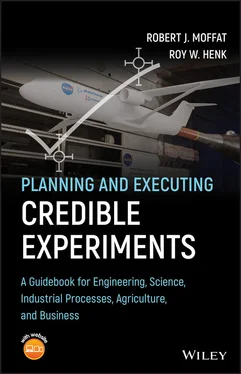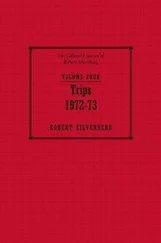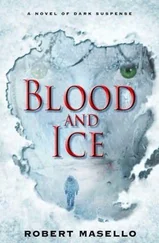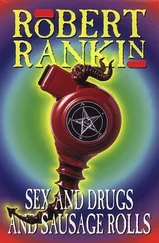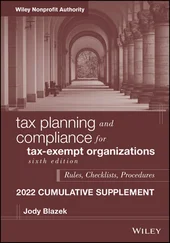208 201
209 202
210 203
211 204
212 205
213 206
214 207
215 208
216 209
217 210
218 211
219 212
220 213
221 214
222 215
223 216
224 217
225 218
226 219
227 220
228 221
229 222
230 223
231 224
232 225
233 226
234 227
235 228
236 229
237 230
238 231
239 232
240 233
241 234
242 235
243 236
244 237
245 238
246 239
247 240
248 241
249 243
250 244
251 245
252 246
253 247
254 248
255 249
256 250
257 251
258 252
259 253
260 254
261 255
262 256
263 257
264 258
265 259
266 260
267 261
268 262
269 263
270 264
271 265
272 266
273 267
274 269
275 270
276 271
277 272
278 273
279 274
280 275
281 276
282 277
283 278
284 279
285 280
286 281
287 282
288 283
289 284
290 285
291 286
292 287
293 289
294 290
295 291
296 292
297 293
298 294
299 295
300 296
301 297
302 298
303 299
304 300
305 301
306 302
307 303
308 304
309 305
310 307
311 308
312 309
313 311
314 312
315 313
316 314
317 315
318 316
319 317
320 318
Planning and Executing Credible Experiments
A Guidebook for Engineering, Science, Industrial Processes, Agriculture, and Business
Robert J. Moffat
Stanford University, USA
Roy W. Henk, Ph.D., P.E.
Kyoto University, Japan (retired)

This edition first published 2021
© 2021 Robert J. Moffat and Roy W. Henk.
All rights reserved. No part of this publication may be reproduced, stored in a retrieval system, or transmitted, in any form or by any means, electronic, mechanical, photocopying, recording or otherwise, except as permitted by law. Advice on how to obtain permission to reuse material from this title is available at http://www.wiley.com/go/permissions.
The right of Robert J. Moffat and Roy W. Henk to be identified as the authors of this work has been asserted in accordance with law.
Registered Offices John Wiley & Sons, Inc., 111 River Street, Hoboken, NJ 07030, USA John Wiley & Sons Ltd, The Atrium, Southern Gate, Chichester, West Sussex, PO19 8SQ, UK
Editorial Office The Atrium, Southern Gate, Chichester, West Sussex, PO19 8SQ, UK
For details of our global editorial offices, customer services, and more information about Wiley products visit us at www.wiley.com.
Wiley also publishes its books in a variety of electronic formats and by print‐on‐demand. Some content that appears in standard print versions of this book may not be available in other formats.
Limit of Liability/Disclaimer of Warranty While the publisher and authors have used their best efforts in preparing this work, they make no representations or warranties with respect to the accuracy or completeness of the contents of this work and specifically disclaim all warranties, including without limitation any implied warranties of merchantability or fitness for a particular purpose. No warranty may be created or extended by sales representatives, written sales materials or promotional statements for this work. The fact that an organization, website, or product is referred to in this work as a citation and/or potential source of further information does not mean that the publisher and authors endorse the information or services the organization, website, or product may provide or recommendations it may make. This work is sold with the understanding that the publisher is not engaged in rendering professional services. The advice and strategies contained herein may not be suitable for your situation. You should consult with a specialist where appropriate. Further, readers should be aware that websites listed in this work may have changed or disappeared between when this work was written and when it is read. Neither the publisher nor authors shall be liable for any loss of profit or any other commercial damages, including but not limited to special, incidental, consequential, or other damages.
Library of Congress Cataloging‐in‐Publication data applied for ISBN HB: 9781119532873
Cover Design: Wiley
Cover Image: © NASA
In memory of Lou London RJM For Cherrine and Neal and those they love RWH
Robert J. Moffat
Stanford University, USA
Roy W. Henk
Kyoto University, Japan
Dr. Robert J. Moffatis Professor Emeritus at Stanford University and former President of Moffat Thermosciences, Inc. Professor Moffat started his professional career at the General Motors Research Laboratories in the Gas Turbine Laboratory. He and a small group of engineers designed, built, and tested a high efficiency, two‐spool regenerative gas turbine that, starting from 30 below zero Fahrenheit, could deliver 350 HP in less than 2 minutes. He graduated from the University of Michigan and received his Master of Science at Wayne State University. Enrolling at Stanford University, he earned degrees in Mechanical Engineering as Master of Science, Engineer, and Ph.D. He became a Stanford professor and served as chairman of the Thermosciences Division for 13 years.

Professor Moffat’s research efforts have involved three areas: convective heat transfer in engineering systems, experimental methods in heat transfer and fluid mechanics, and biomedical thermal issues. His largest body of work concerns convective heat transfer. One program focused on gas turbine blade heat transfer. A second program aimed at convective cooling of electronic components covering forced, free and mixed convection. Several contributions arose including invariant descriptors, a new heat transfer coefficient for electronics cooling, and a simple correlation based on turbulence intensity.
His second area of research concerned experimental methods in the thermosciences namely full‐field imaging techniques for temperature, heat flux, and heat transfer coefficient measurement using thermochromic liquid crystals. He contributed regularly to the theory of uncertainty analysis. Dr. Moffat was an invited lecturer for 40 consecutive years in the Measurement Engineering Series, for more than 20 years in the Instrument Society of America Test Measurements Division and, for ten years in the ASME Professional Development program.
Dr. Moffat worked on biomedical engineering problems, in particular the thermal protection of newborn infants. He jointly developed a self‐contained, portable incubator which provided a neutral thermal environment for the infant while allowing free access by the attending physicians. Used on almost every continent where cold‐weather transport is needed, it received the ASME Holley Medal Award, 1987. He founded Moffat Thermosciences as a vehicle for consulting, research, and teaching in Heat Transfer and Experimental Methods. He delivered short courses in Electronics Cooling, Experimental Methods, and Uncertainty Analysis.
Dr. Roy W. Henk, professor in the Graduate School of Energy Science at Kyoto University, Japan, earned his bachelors degree at Virginia Tech and his masters and doctorate at Stanford University. Professor Henk taught courses within natural and experimental philosophy, currently known as classical physics and mechanical engineering.
Читать дальше
